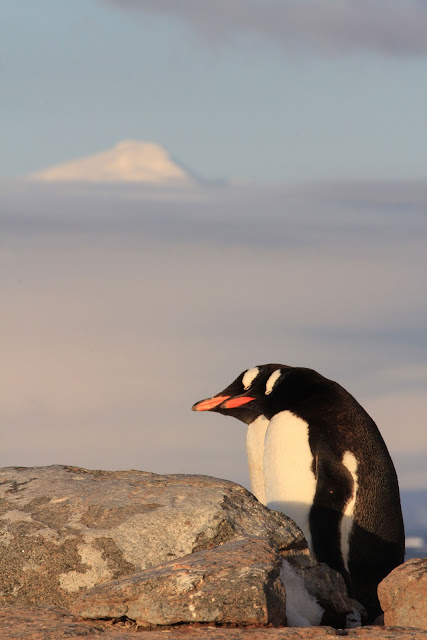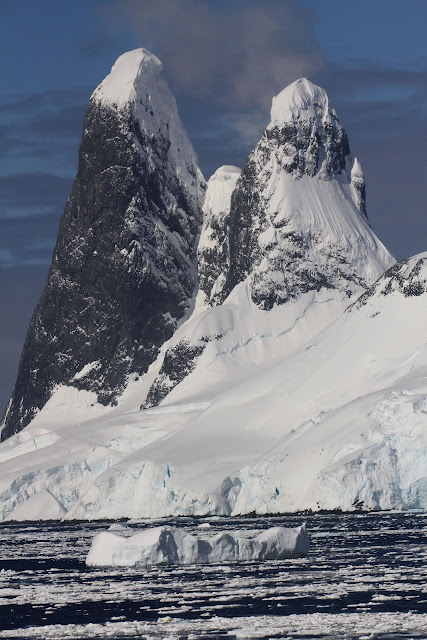My last day of birding at the Fin del Mundo on the Isla de
Tierra del Fuego in Patagonia, Argentina is tomorrow. It’s going to be
difficult to top all of the species I’ve seen so far over the last month. Today
was very special with two Chilean Flamingoes feeding in a laguna on Estancia de
Los Flamencos. So far I’ve seen 81 species of birds on this island – not a huge
number but many of them are very specific to this area like the Magellanic
Plover, the only member of its family and with a limited distribution. We were
blown sideways in 50-60 mph Patagonian winds trying to locate this special
plover on the shores of a lagoon when we spotted the two flamingoes – gorgeous!
My photos are less than sharp because not only was it impossible to hold my 300mm
lens steady, I kept having to step forward to avoid being blown over. There
were moments on the way back to the van that the wind stopped me and I
literally couldn’t step forward it was so strong. I felt like I was at the top
of a mountain in the middle of the jet stream. Yet the flamingoes held their
ground and the Baird’s Sandpipers on the shore managed to fly from here to
there so perhaps the winds weren’t quite the hurricane strength I perceived.
In contrast to the localized plover we found at the lagoon
next to the flamingoes’ lagoon, the sandpipers (Baird’s and White-rumped),
Sanderlings, Red Knots, Black-bellied Plovers, and Hudsonian Godwits we saw at
the high tide line on the Atlantic coast are all long-distance migrants. Some
of them breed even farther north in the Arctic than the north slope of Alaska
where I found shorebird nests at Prudhoe Bay back in the early 90s as a field
tech by day and as a PhD student studying shorebirds by night (always light). It’s
mind boggling to imagine the same individual Arctic Terns, Baird’s Sandpipers,
and Black-bellied Plovers I’ve seen on this trip breeding in Alaska in a few
months.
We’re staying at the Kaiken Hosteria at the west end of Lake
Fagnano, a long lake that nearly splits the island in half. The island is split
in half in the other direction with the west portion belonging to Chile and the
east portion belonging to Argentina. It’s a strained relationship between the
two neighbors, almost as if they don’t really want to be roommates, but they have
to be. When our captain radioed the Chilean authorities to ask if we could
approach Cape Horn, the southern tip of South America and part of Chile, closer
than 3 miles so we could see the wildlife closer to land, he was told that 3
miles was the limit. Only a few ships are allowed to take the shortcut back to
Ushuaia through Chilean waters after rounding Cape Horn. Our ship is not one of
those ships so we go east to the entrance of the Beagle Channel, then west
through the channel. We docked at 630am and our rooms were being cleaned while
we were at breakfast and we disembarked at 745am. Unbelievably, our ship was
heading right back across the Drake Passage to Antarctica for 10 days and
leaving at 4pm the same day we landed!! And get this, the next set of passengers
is not composed of mainly senior world travelers but rather 50 (50!) 10-15 year
old Chinese kids and their teachers! The kids are apparently rewarded for their
exceptional performance in school by going on a trip to Antarctica. My grade
school sure wasn’t like that. I’m sure they’ll all be very well behaved if they
earned this trip, but I can’t imagine a more different experience than the one
I had.
Fast forward: just arrived at my hotel in Buenos Aires at
2am. At least I get late checkout waiting for my 10pm flight home. I haven’t
downloaded any of my pictures from the Tierra del Fuego birding trip but these
two are both representative of what I saw (took them on the pre-birding trip).
We had even better views of a male (pictured) and female Magellanic Woodpecker
today but of course I didn’t take my camera on that short walk. Silly me. But I
DID have it for a pretty crazy stop on the way to the airport – just as we were
leaving the national park. Eagle-eyed Willene spotted a beaver in the marsh. We
parked, ran across the road, looked, ran back to the van (hi, camera!!), and
snapped great pics of this industrious animal chewing off a branch of an
Antarctic Beech, and dragging, then swimming with it, over to a hole in the
bank. I’ve never seen a beaver before and we all chuckled when I told people
that I’m from Oregon, the Beaver State, with a beaver on the state flag, and
I’ve never seen one. So now I’ve seen an introduced species to Patagonia, one
that they’d like to get rid of because it kills trees when they flood from
beaver dams and alter the habitat. More lifers today as well – we saw
everything we tried to find and spent all day walking around the Tierra del
Fuego National Park on a gorgeous t-shirt weather day. This has certainly been
a trip I will never forget and I’m sure I’ll be back again to add to these
memories and experiences.
PS – now that I’m off the ship, my pictures are as they
should be! I’ll replace the others when I get a chance.



















































